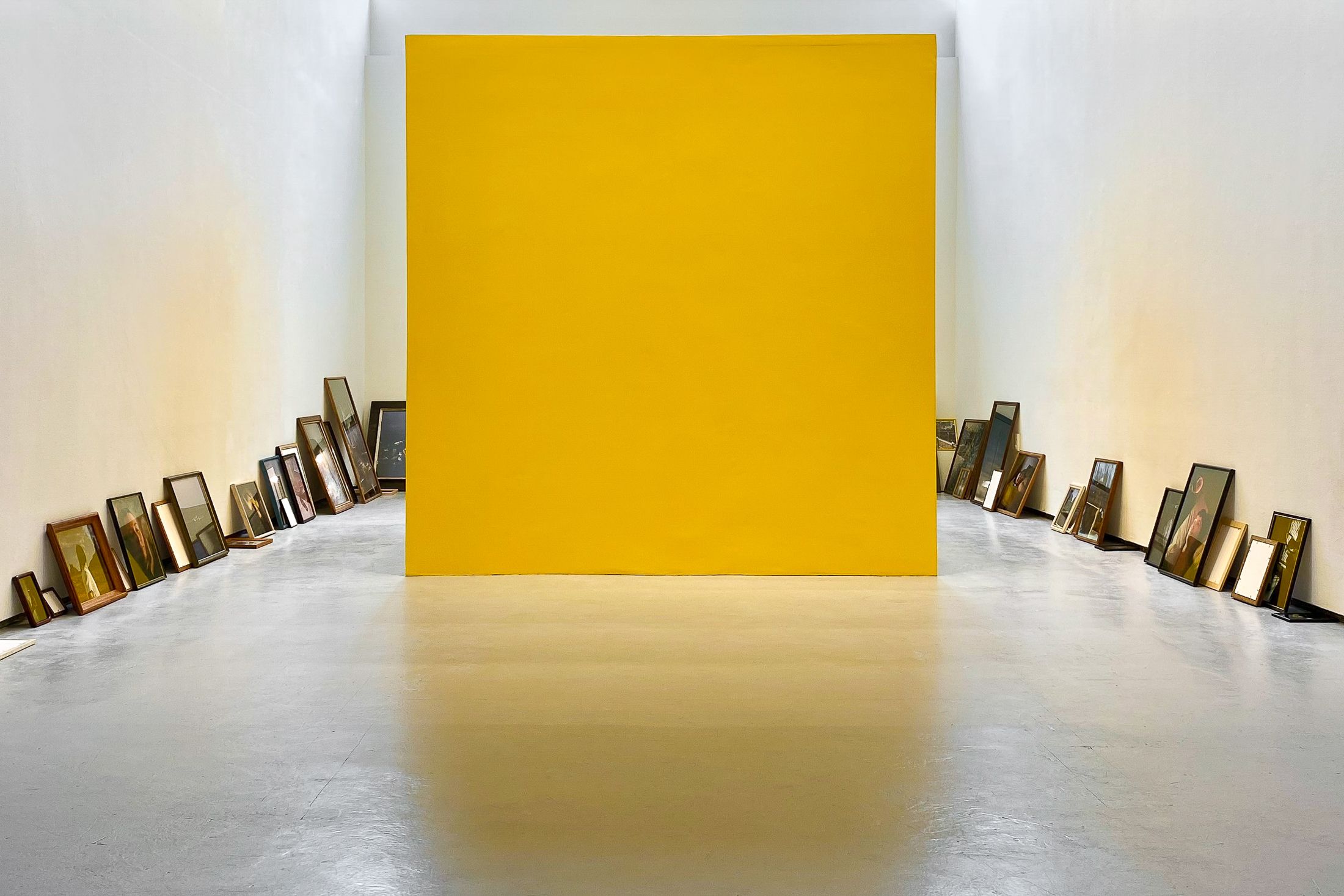
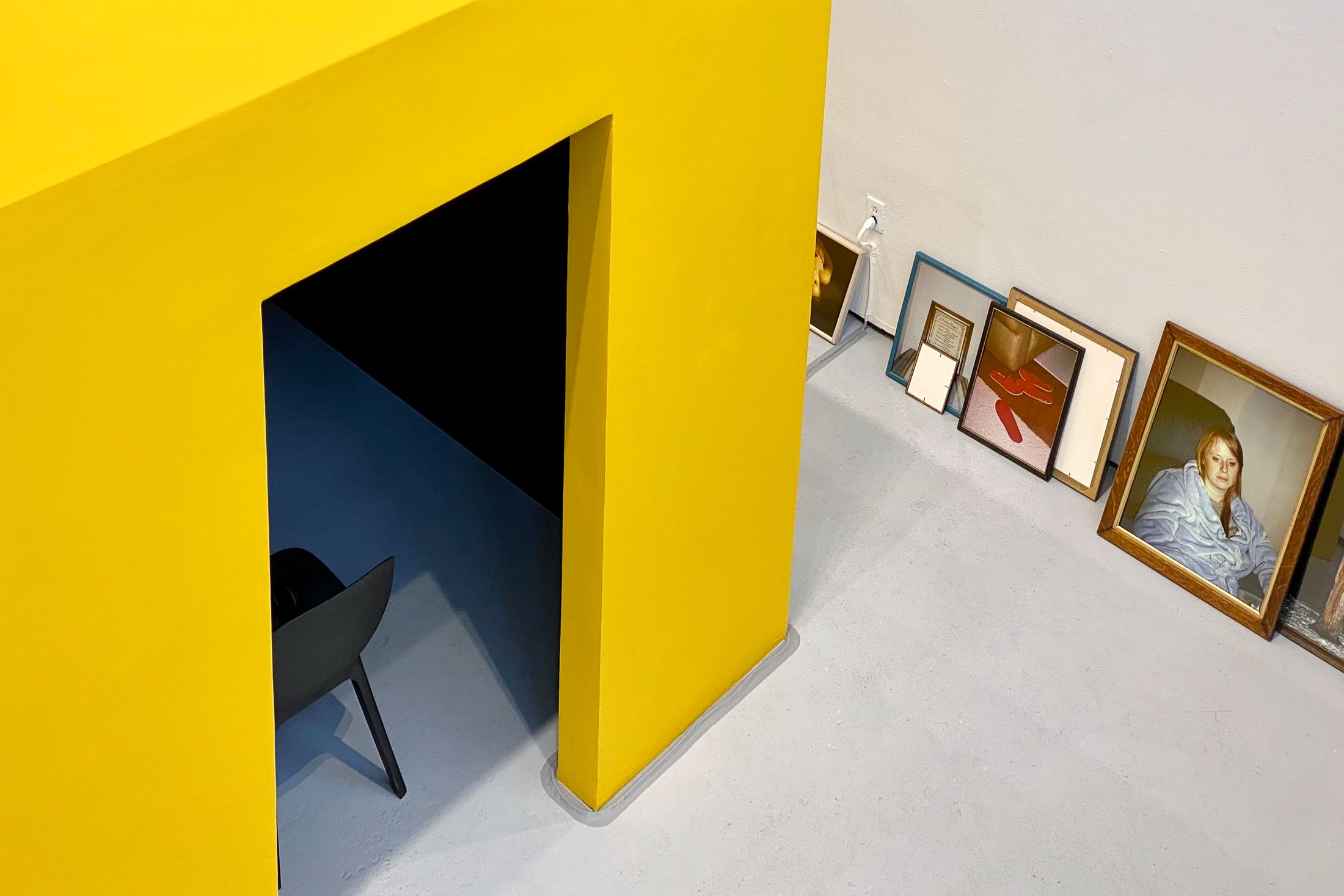
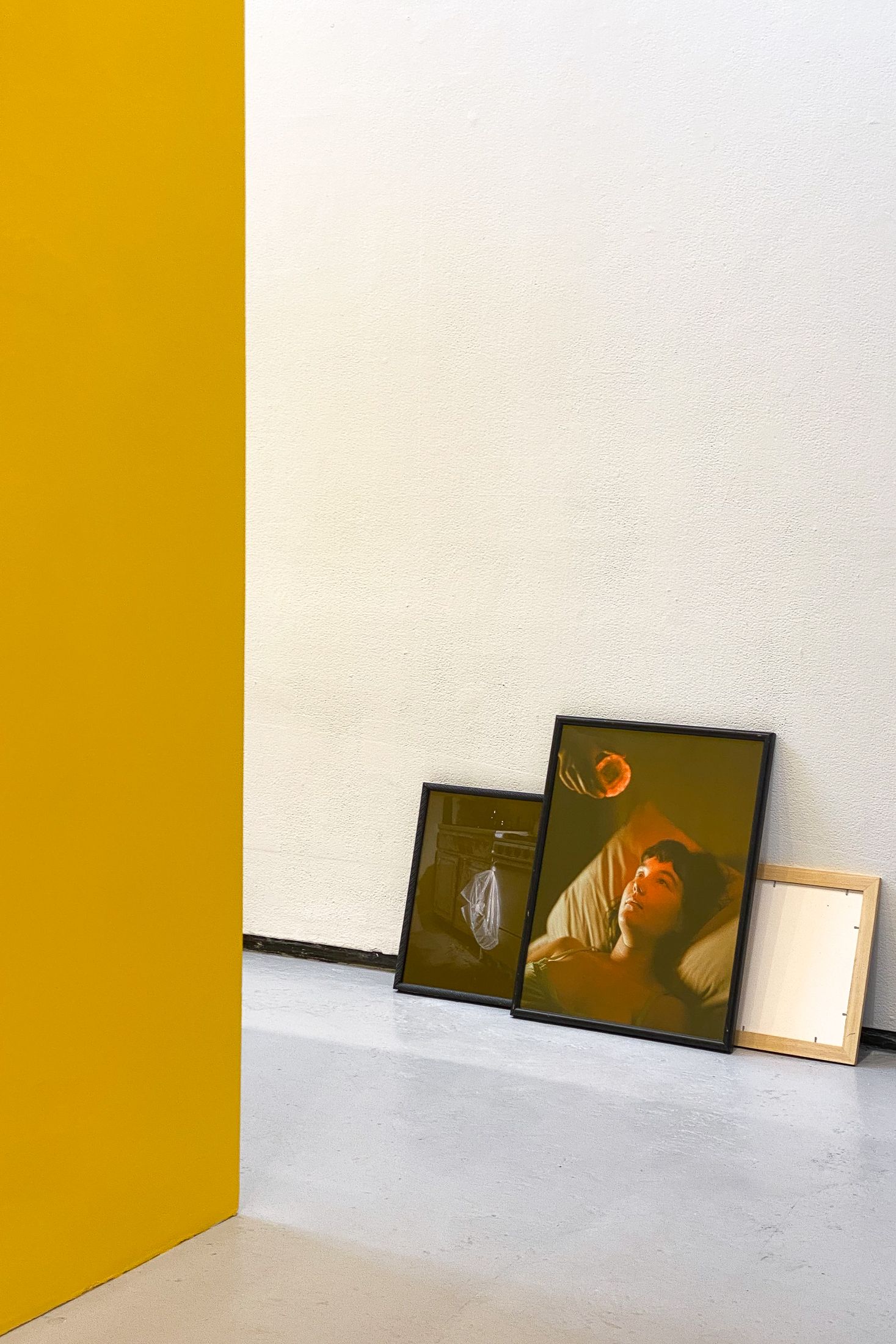
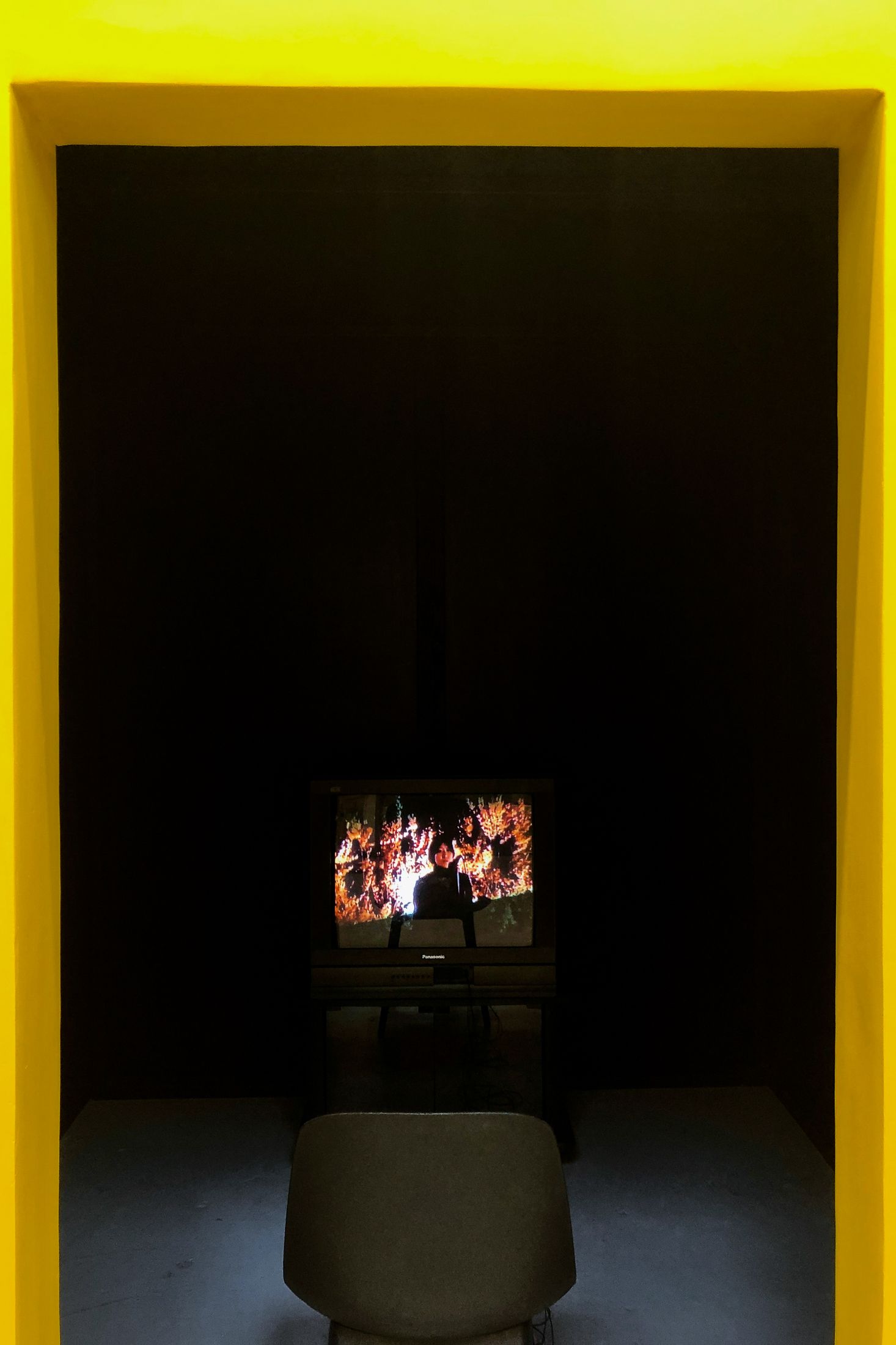
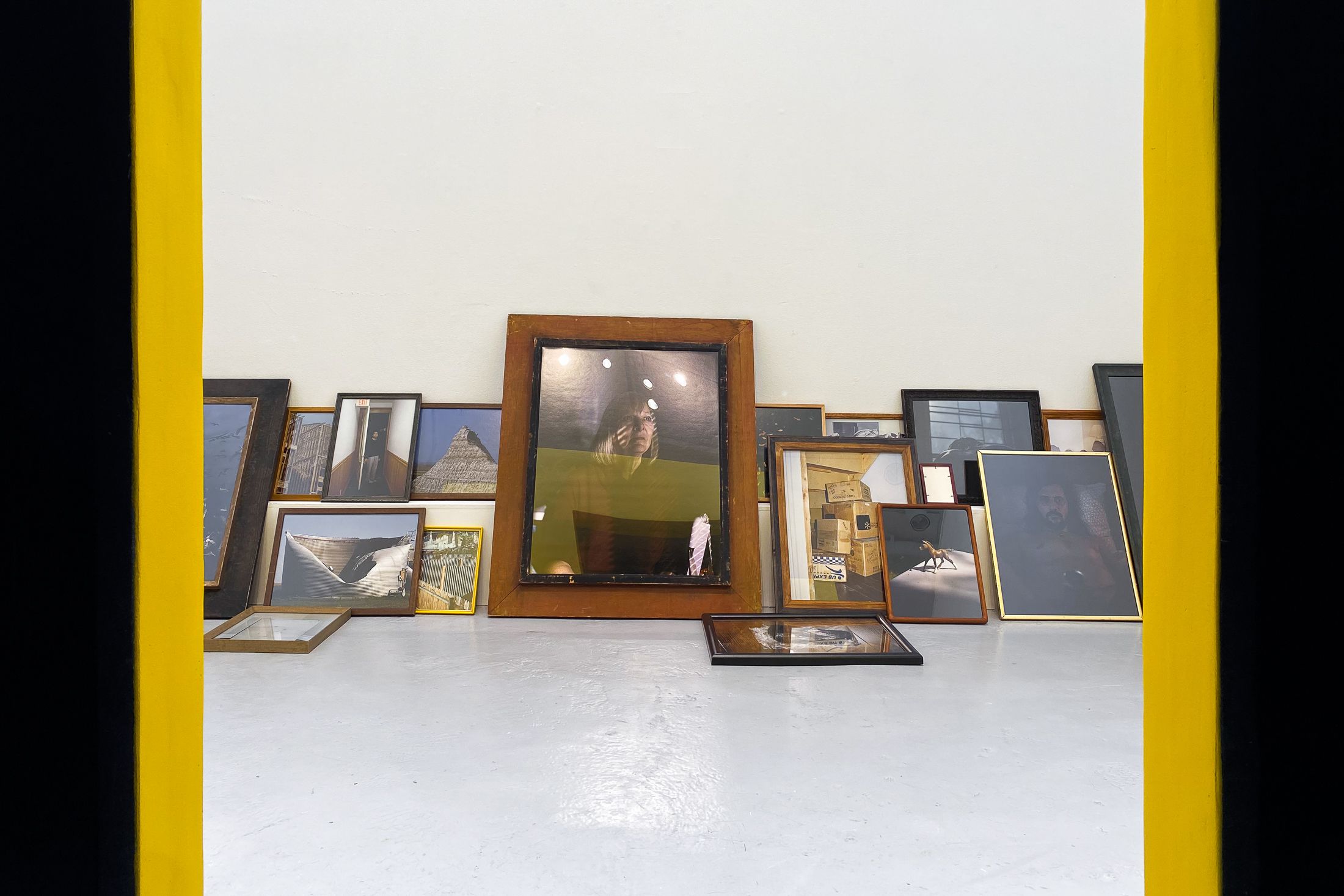
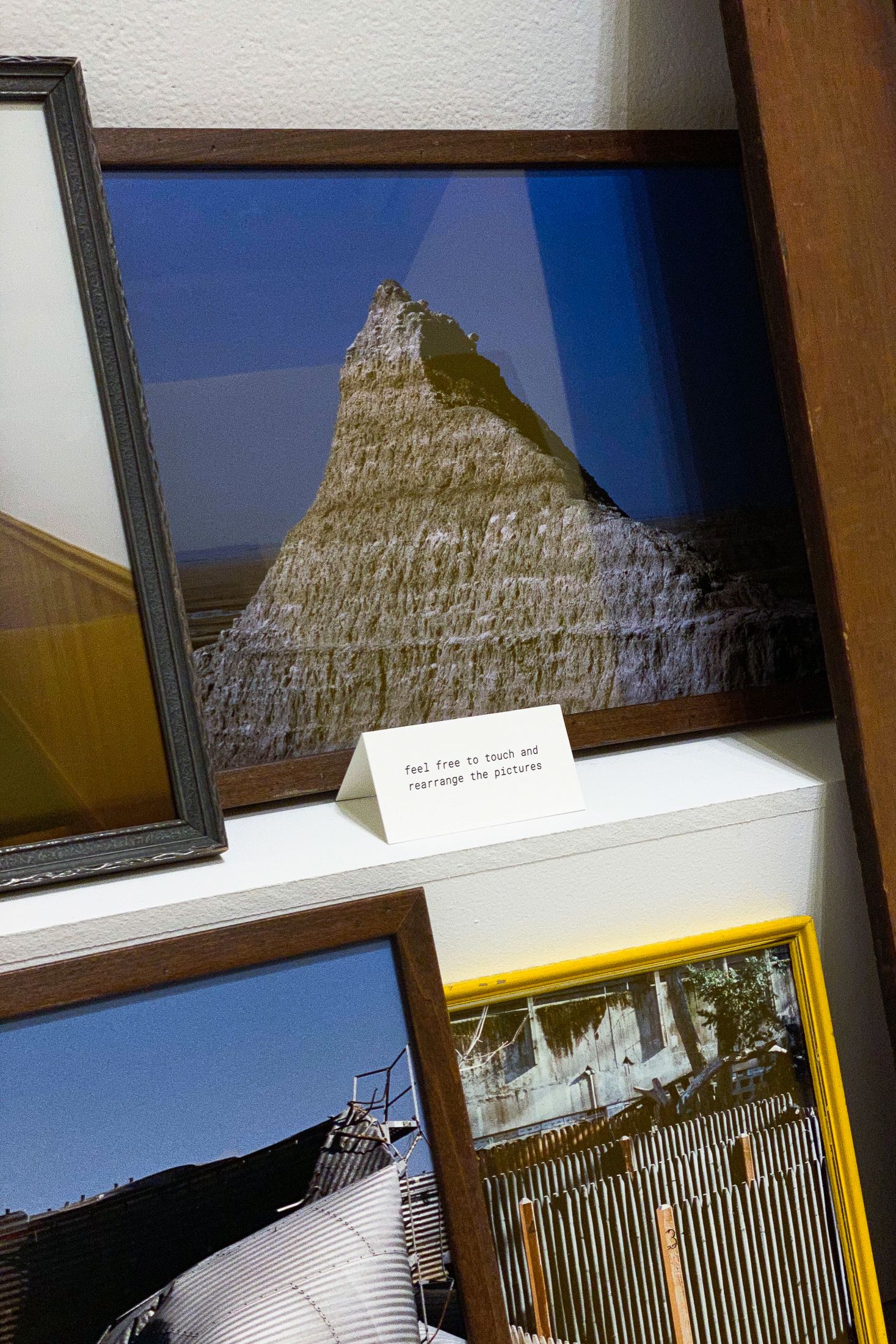
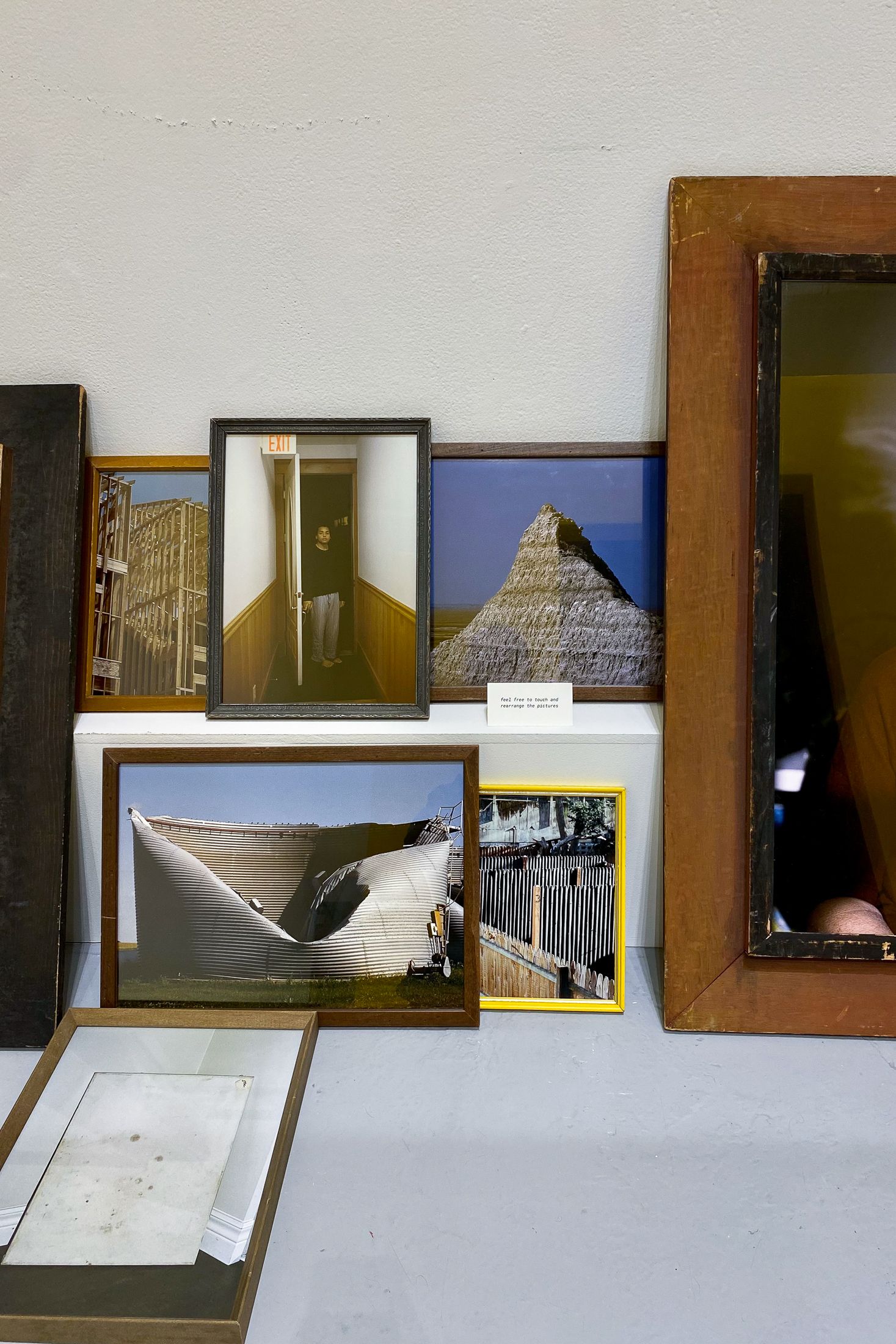
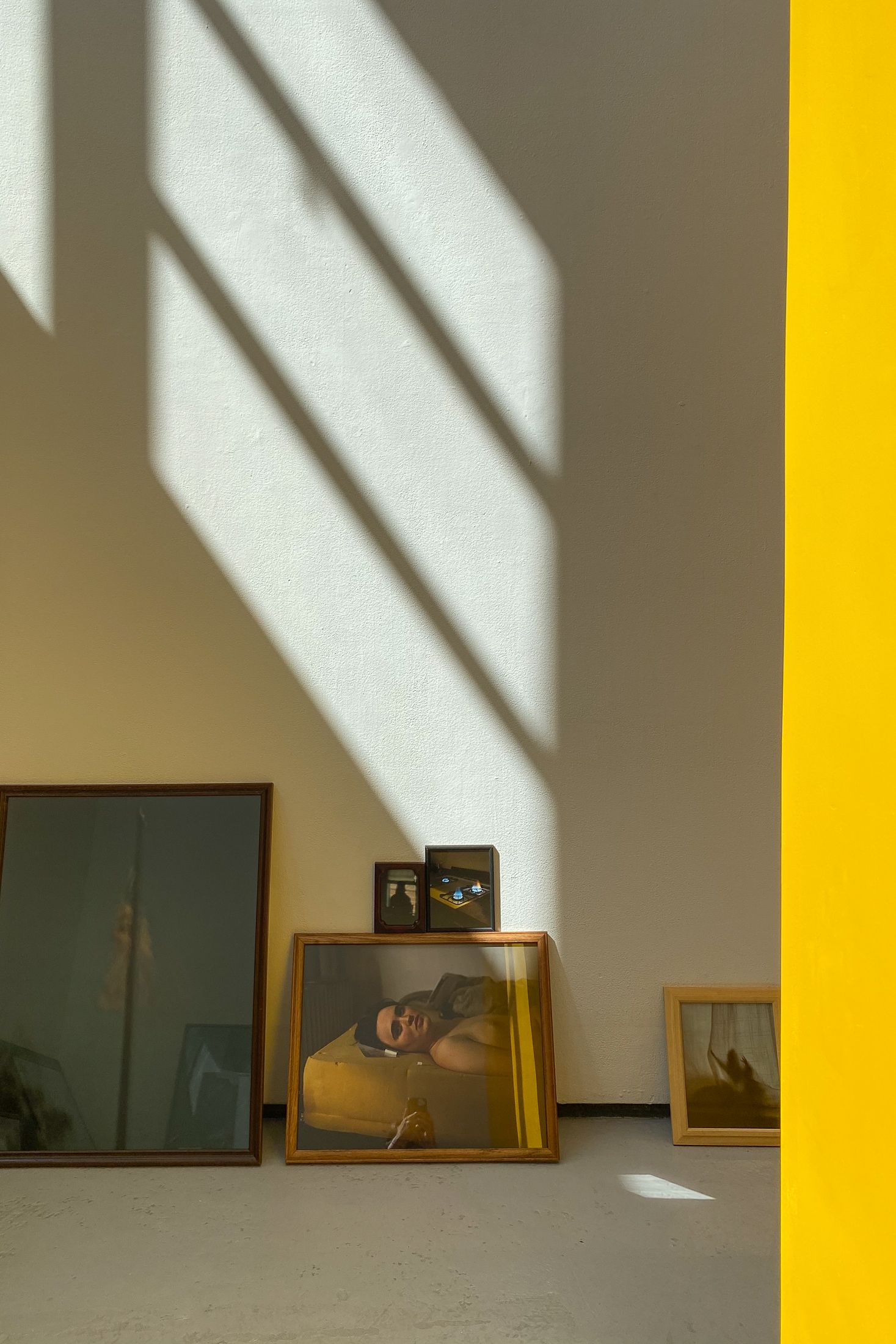
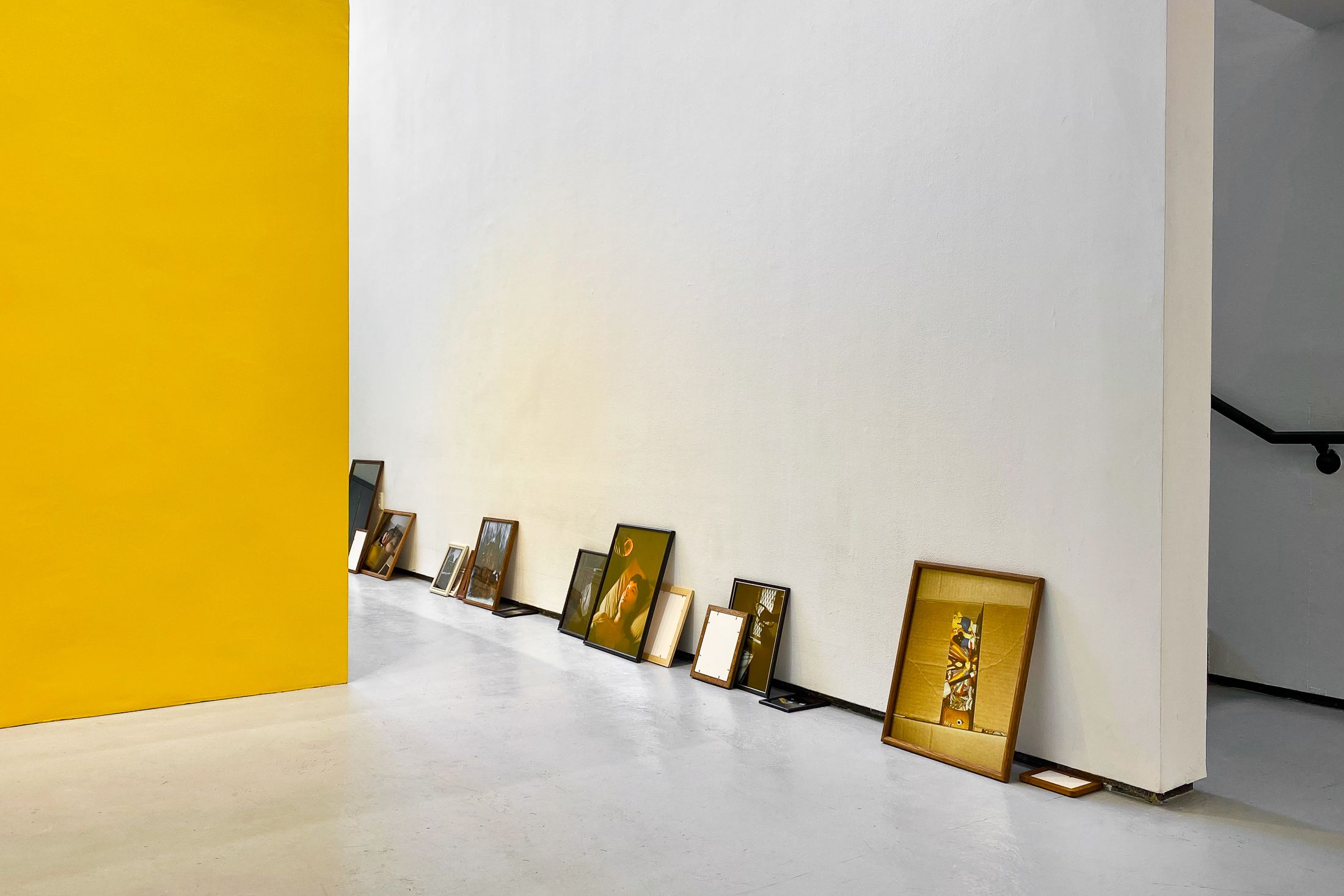
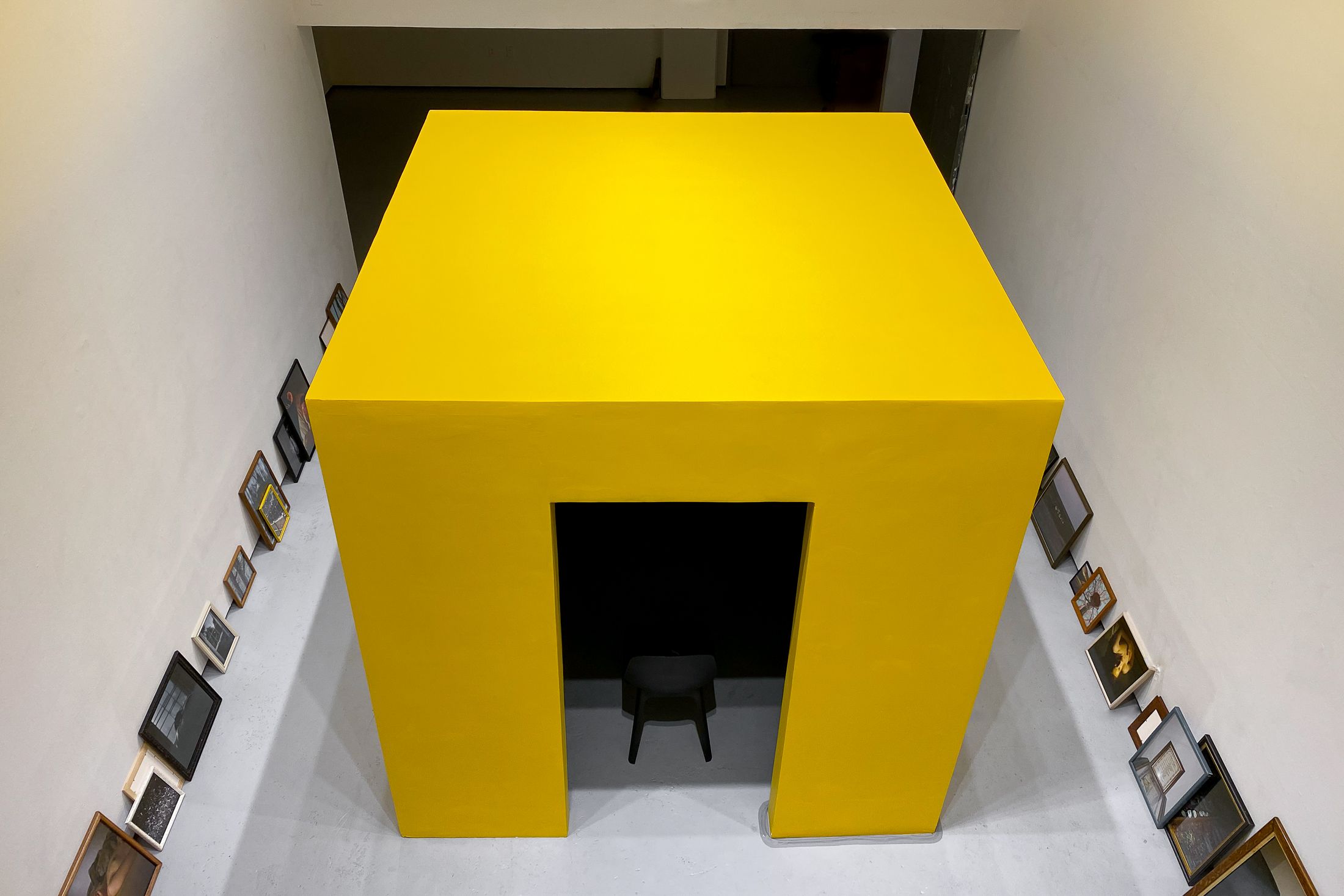
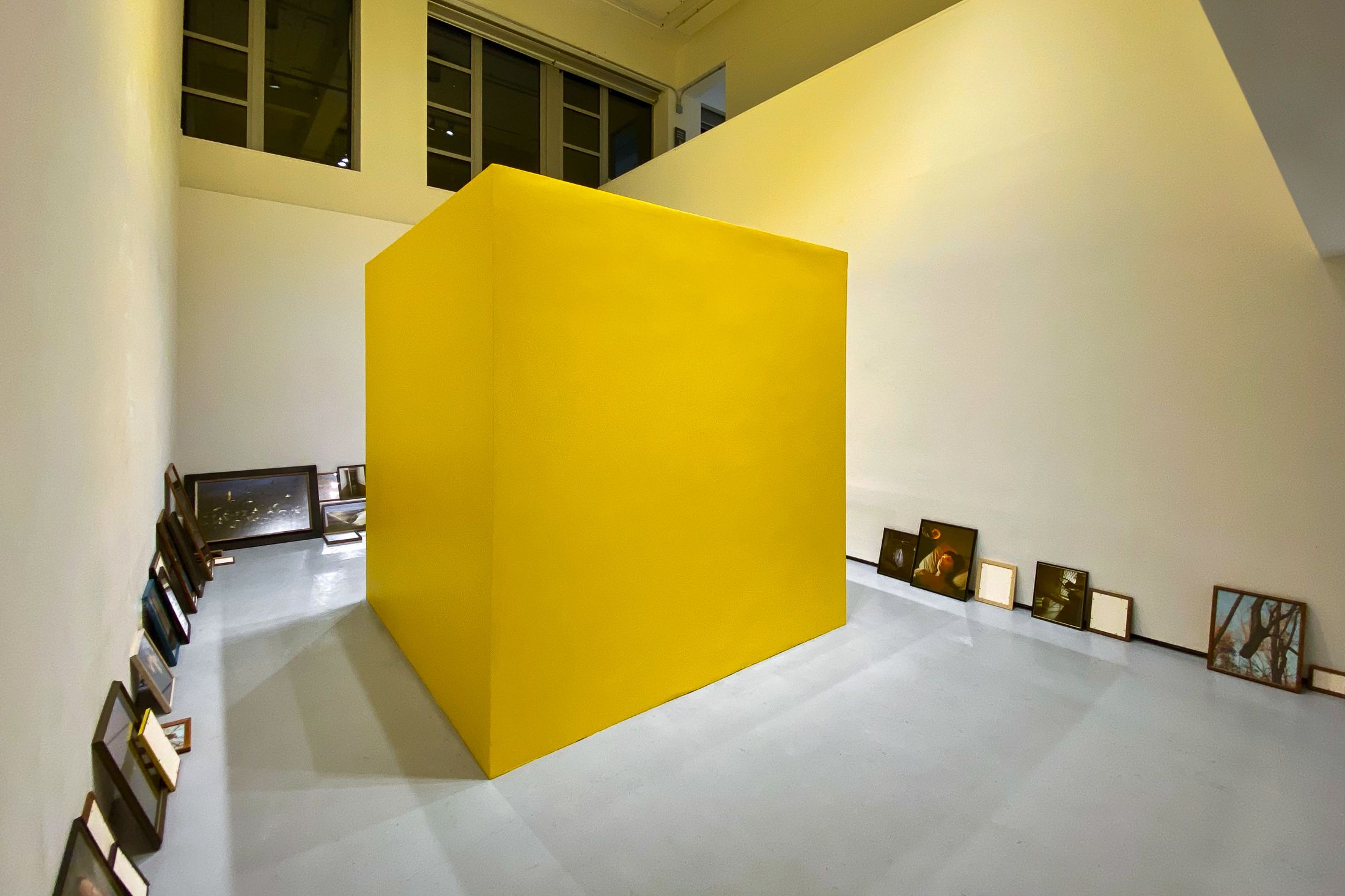
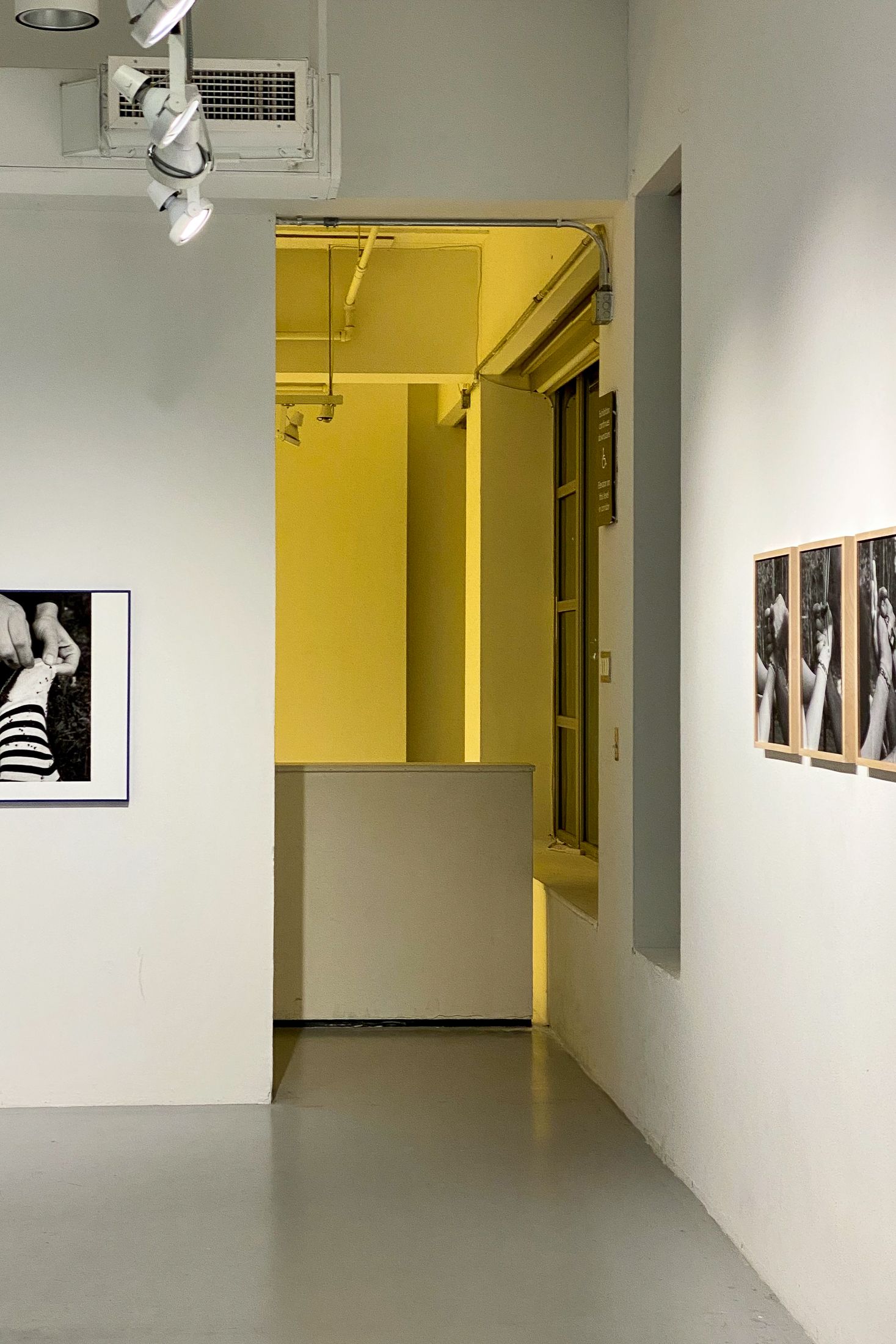












2021
Fifty-seven archival pigment prints in locally salvaged frames, found TV, video room, video on loop, paint, instructions
Site-specific installation, Green Hall Gallery, Yale School of Art, New Haven, CT
Annie Ling’s work engages us in conversations about human connection and its relationship to landscape, mourning, colonization, belonging, and family with great keenness and depth. Her immersive thesis installation, Yellow Oasis, a culmination of her work at Yale, brings together video, photography, found materials (each frame has been repurposed, the original contents carefully documented by the artist as part of her process), and performance to create an environment that activates space for improvisation, reflection, and interaction, a place for dwelling. The photographic work in this exhibition demands that sight be interrogated as a mode of conversation with the unsaid. The photographs hold objects and people in suspension, creating the feeling of stillness locked in time. Whether the subject is human or object, each of the 57 images—a tree crossing another tree, the landscape of a back, a laughing face, a casserole dish still striated with the residue of a meal, a flock of birds or floating leaves, a plastic bag—is framed as a “still life.”
Ling is also an accomplished poet who works in the liminal space between image and text. Both her visual and poetic work address the systems of care we depend on and are often failed by. Her pieces step into the breakage that is constantly trying to mend itself. In the exhibit, there are several images of trees, which create a narrative thread around nature and humanity. These images have another life in Ling’s Phantom, an image and text series where the broken and entangled limbs of trees and the limbs of humans are put in narrative conversation. In Phantom, two voices—an artist and a physical therapist—address pain, nature, the body, and reciprocity, all interspersed with images of tree limbs, severed, tangled. The network of roots of a fallen tree becomes a kind of map, a metaphor for the potential of human connection. The shapes in the trees highlight a connectedness and interdependence that is inevitable to nature but not always intuitive to human relationships. Her photographs ask the viewer to consider how an acknowledgment of interdependence is vital to our survival.
At the center of the installation sits a brilliant yellow walk-in cube. The color glows and transforms the surrounding white walls. Inside this yolk-like structure, we are shown a looping music video, shot with a now obsolete technology, in which the artist lip syncs to a 2002 song called “Stop Crying your Heart Out” by the English band Oasis. At times, she is backed by a yellow forsythia bush. It’s almost difficult not to be drawn in by this song’s imperative, as it feels both impossible, necessary, and filled with the inevitability of cycles of grief.
Text by Claudia Rankine